Monitor Lizard Profile
When the terrible lizards vacated the top niches, mammals came out of the ground, blinking in the new light, and leaning heavily on their hot chemical energy and brain power to radiate rapidly into the empty spaces. This saw a new era of warm-blooded, furry dominance over the lands and waters, and for the most part, that’s lasted for tens of millions of years. But one reptile didn’t get the memo.
This is a lizard that has remained sharp, holding fast to its niche in the face of overwhelming mammalian competition and even growing to prehistoric proportions.
Monitor lizards are the mammalist lizards, and show us that there’s still a lot of latent potential in the reptile gene, should we ever get complacent.
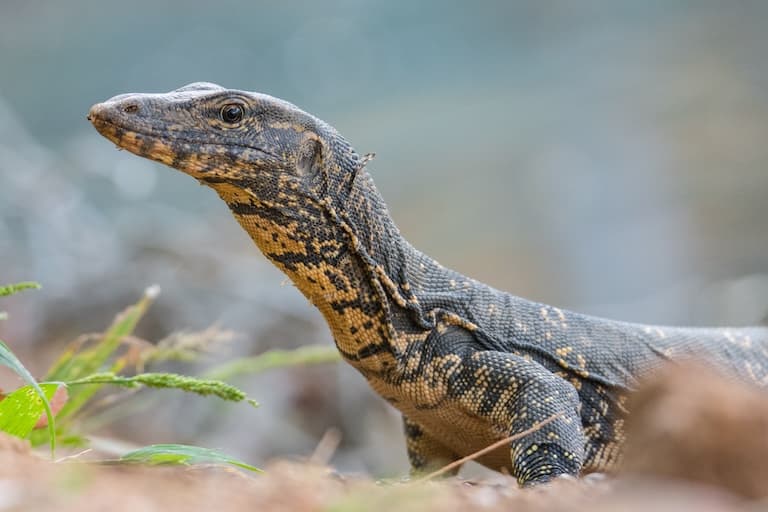
Monitor Lizard Facts Overview
| Habitat: | Varied, some arboreal, others terrestrial, deserts to forests, rivers |
| Location: | Africa, Asia, Oceania |
| Lifespan: | 30+ years in large species |
| Size: | 2.59 m (8.5 ft) in Komodo dragons |
| Weight: | Up to 90kg (160 lb) |
| Colour: | Usually dark some with yellows and greens |
| Diet: | Mostly carnivorous: birds, amphibians, reptiles, mammals, insects, fish, some eat fruit |
| Predators: | Crocodiles, large raptors, leopards, humans |
| Top Speed: | 20 km/h (12 mph) |
| No. of Species: | Around 50 |
| Conservation Status: | Most are of Least Concern, some Critically Endangered (IUCN) |
Monitors are snake-like in a lot of ways and mammal-like in a lot of others.
These intelligent, fast, enormous hunting lizards are common all over the world and have been known to grow to terrifying proportions.
With the debate around their venom finally over, it can now be said that these are probably the most unusual and remarkable lizards left on the planet.
Interesting Monitor Lizard Facts
1. They’re unique
One strange thing about monitor lizards is that they all look very much alike. This isn’t strange on its own, but coupled with the fact that they range in size tremendously, from the tiny 16-gram Dampier Peninsula monitor to the gargantuan, 2-ton demon that once terrified early human settlers in Australia.
In some ways, monitor lizards seem more similar to snakes than other lizards, and this has been the topic of debate regarding where snakes come from and how they fit alongside lizards in the Squamata order.
Genetic studies do suggest a close link between monitors (and iguanas) and snakes, and there are some curious similarities.
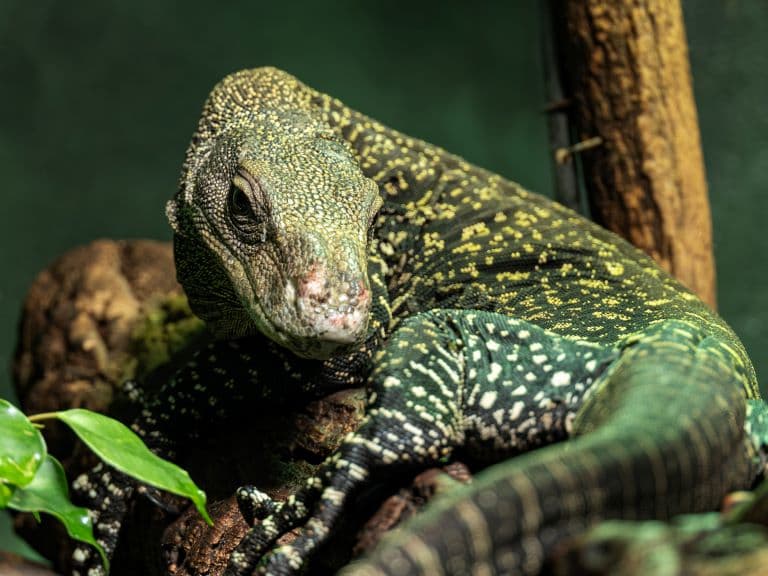
2. They’re big
The largest terrestrial lizard ever known was a monitor: a 2-ton dragon from Australia. Unfortunately for the lizard, it’s likely that the first human settlers would have made short work of these animals and drove them to extinction.
Traditional, Aboriginal legends of six-metre-long goannas with frog faces may have been inspired by confrontations with this incredible animal, but like all large animals on landmasses discovered by humans, its days were numbered the moment we realised we could eat it.
Today, the largest lizard is still a monitor, albeit a slightly smaller one, but still has a horrifying presence on the islands of Komodo, Rinca and Flores in Indonesia. These lizards are “only” 70kg and can be highly dangerous.
One of the reasons for this is that they’re a lot quicker than you might expect from a reptile.
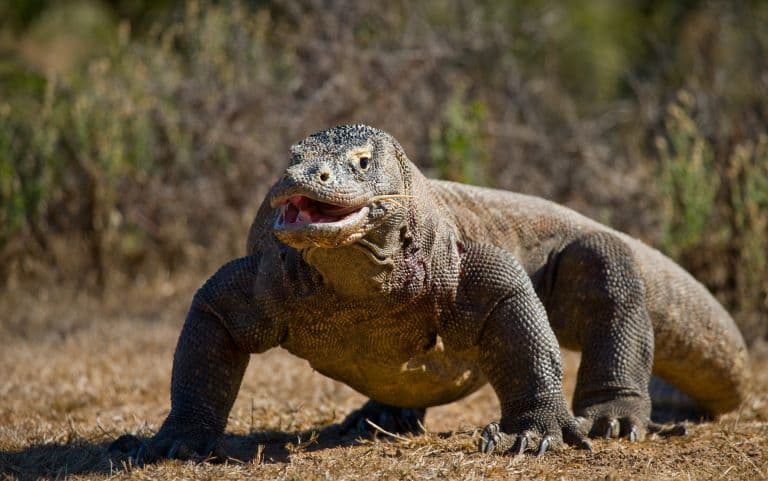
3. They’re fast
Reptiles have a reputation for being slow, cold-blooded, ambush hunters. Chasing down prey is a luxury afforded to things like mammals, who have plenty of warm-blooded, high-metabolism endurance.
But monitor lizards defy convention in several ways. They hunt in ways that are much more commonly found in mammals, occupying large territories and chasing down prey.
Their stamina for this comes from having the highest metabolic rate of any extant reptile, and this adaptation is backed up by a four-chambered heart, similar to that in a python or a boa, and different from the three-chambered hearts found in most reptiles.
4. They can eat a deer
Being such formidable hunters makes them a powerful top-down force in their ecosystem. While some are only large enough to take down small birds and their eggs, the Komodo dragon routinely hunts and kills large game.
Venison is on the menu for these monitor lizards, and with a high metabolism, they eat more than your run-of-the-mill giant snake, filling important niches that reptiles traditionally handed over to mammals around 66 million years ago when the dinosaurs returned to their home planets. 1
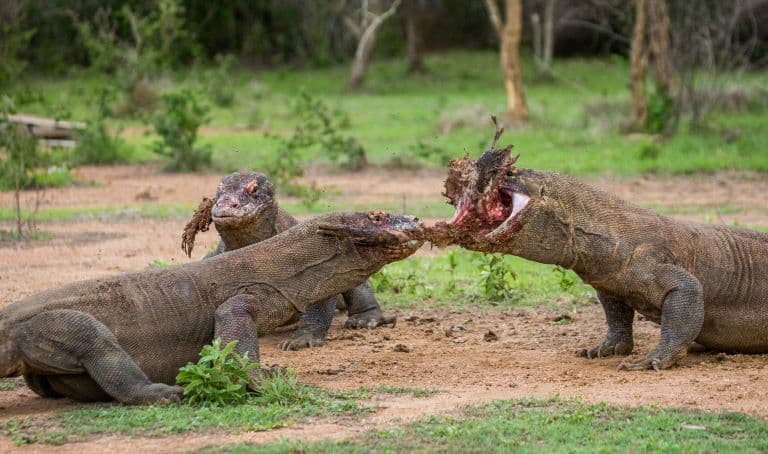
5. Some eat fruit
Not all monitor lizards are prehistoric murderers. A close relative of the Komodo dragon has made the move to fruit and doesn’t appear to be looking back.
This two-metre monitor lives in the Philippines and was so secretive about it that it only made itself known to science a decade or so ago. It makes up three species of vegetarian monitors known. 2
6. They can smell in stereo
Back to the snake similarities, monitors have forked tongues for smelling, just like their legless cousins. This allows them to smell in stereo, essentially getting a finer detail of the direction of their food or mates.
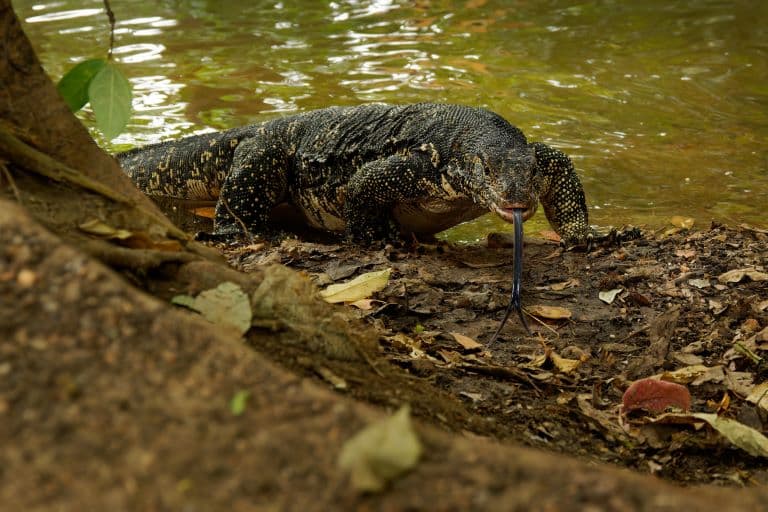
7. They are venomous
Anyone who’s been lucky enough to trip over a tree root trying to catch one of these lizards understands that they’re incredibly fast and can put up a fight.
Their powerful tails can be used as whips if you’re even able to get close enough for them to use it, but they have one more line of defence too, and one that’s been a matter of contention for decades.
Komodo dragons, for example, have long been known to have very special saliva. Their method of killing was once thought to be a bite-and-release strategy, and while the lizard waits, components in their saliva prevent blood from coagulating and bleed their prey to death.
Whether this was a bacterial process or a venomous one has gone back and forth for a long while, but it’s now thought that the active component in a fatal Komodo bite can be considered venom, and it acts to quickly drop blood pressure and initiate bleeding.
Unlike snakes, Komodos have multiple venom glands between their teeth and this oozes the toxins into the mouth, which are then delivered to prey using a “bite and pull” technique.
And what’s more, is that this isn’t unique to the dragon. It’s now thought that all monitors are venomous, and perhaps even most lizards, to an extent. While some are anti-coagulants, others are neurotoxic, such as in the desert monitor. 3
8. They’re smart
Monitors are smarter than your average lizard, too. Faster metabolisms mean more power for thinking, and in tests, they’ve been shown to be able to count objects up to at least six.
Nile monitors have been known to cooperate for a hunt, and captive individuals appear to have distinct personalities from one another. Some have gone so far as to say they’ve seen monitors engage in play behaviour. 4
9. Cane toads are a threat in Australia
Cane toads have really done a number on Australian wildlife. Not only do they eat everything but they’re also poisonous, and local monitor species didn’t evolve alongside them, so they don’t realise this off the bat.
Several species of Australian monitors have been heavily affected by the toxins from cane toads, which causes a cascade of effects on the ecosystem from the reduced pressure of a top predator. 5
Monitor Lizard Fact-File Summary
Scientific Classification
| Kingdom: | Animalia |
| Phylum: | Chordata |
| Class: | Reptilia |
| Order: | Squamata |
| Family: | Varanidae |
| Genus: | Varanus |
Fact Sources & References
- KUYA HILSON TV (2023), “KOMODO DRAGON EATING ALIVE DEER”, YouTube.
- Linda Geddes (2010), “Meet the giant fruit-eating monitor lizard”, NewScientist.
- CAROLYN BARRY (2009), “Komodo Dragons Kill With Venom, Researchers Find”, National Geographic.
- LORENZO CIOTTI (2022), “The intelligence of the Monitor lizard”, Rapusia.
- Lachlan Pettit (2021), “The Impact of Invasive Toads (Bufonidae) on Monitor Lizards (Varanidae): An Overview and Prospectus”, The University of Chicago Press Journals.
